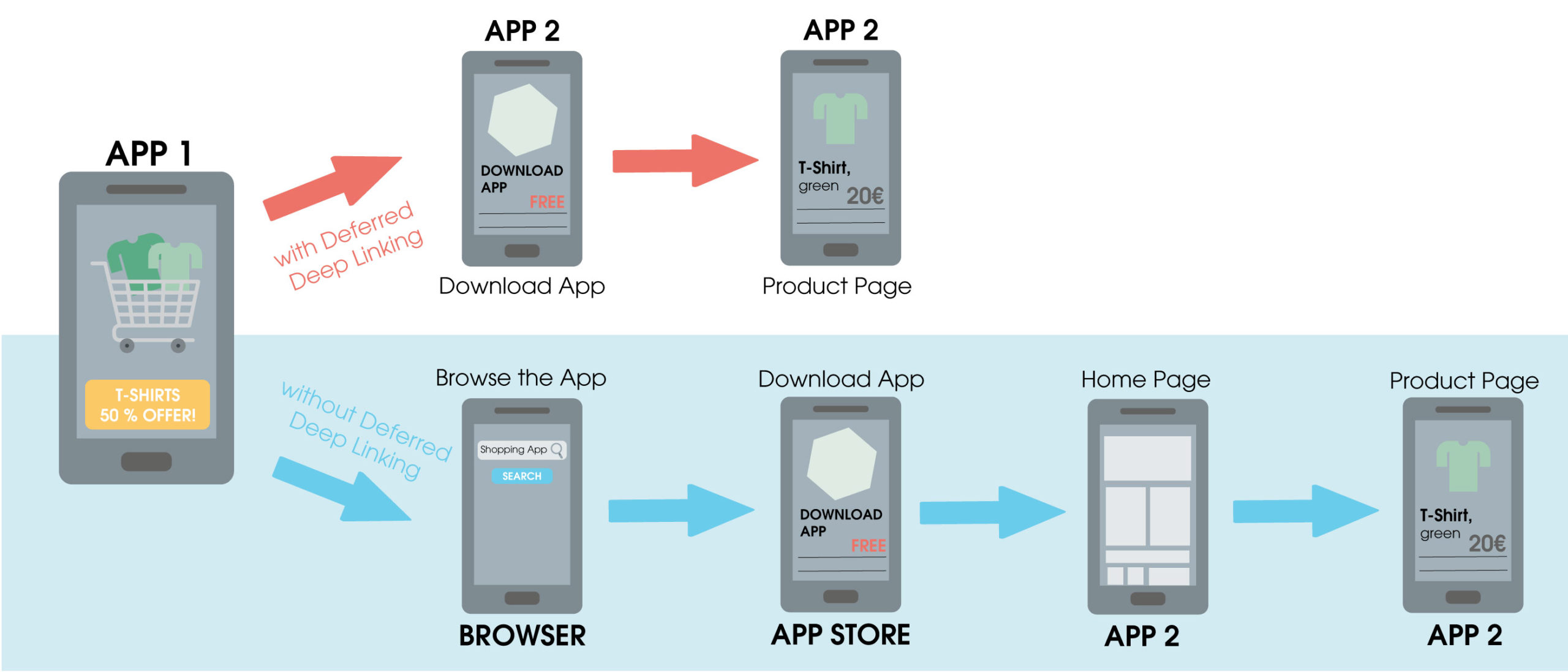Deep Hot Link: The Ultimate Guide To Boosting SEO And Website Traffic
Deep hot linking might sound like something straight outta a sci-fi movie, but let me tell you, it's one of the most powerful tools in the digital marketing game. Imagine this: you've got a website, but it's not getting the traffic you want. What's the deal? Well, my friend, that's where deep hot linking comes in to save the day. It's like finding the secret sauce that makes your website pop and helps search engines like Google love you just a little bit more. So, buckle up because we're diving deep into the world of deep hot links.
Now, you might be thinking, "What exactly is a deep hot link?" Great question! It's not just about slapping a link on your site and hoping for the best. A deep hot link is when you link to specific pages or sections within your website, making it easier for both users and search engines to navigate. This strategy helps improve your site's SEO, which ultimately leads to more traffic and higher rankings. And who doesn't want that, right?
In today's digital world, having a strong online presence is crucial. Deep hot linking isn't just some fancy term; it's a practical approach that can make a real difference in how your website performs. So, let's break it down and explore everything you need to know about deep hot linking, from its benefits to how you can implement it effectively. Trust me, by the end of this guide, you'll be ready to take your website's performance to the next level.
- Bunkralbum The Ultimate Guide To Exploring The World Of Hidden Musical Gems
- The Vampire Diaries Cast A Deep Dive Into The Supernatural World
What is Deep Hot Linking?
Alright, let's get down to business. Deep hot linking is essentially the practice of creating hyperlinks that point directly to specific sections or pages within your website rather than just linking to your homepage. Think of it as giving your visitors a direct route to the information they're looking for, rather than making them wander around your site like a lost puppy. This not only enhances user experience but also helps search engines understand the structure of your site better.
For example, instead of linking to your homepage and hoping users find what they need, you can link directly to a blog post, product page, or even a specific paragraph within an article. This targeted approach makes it easier for both users and search engines to access the most relevant content quickly. Plus, it shows search engines that your site is well-organized and has valuable content worth ranking higher in search results.
Why Should You Care About Deep Hot Linking?
Here's the deal: if you're serious about growing your website's traffic and improving its search engine rankings, deep hot linking should be on your radar. Why? Because it works! By implementing deep hot links, you're not only making your site more user-friendly but also signaling to search engines that your content is relevant and valuable. This can lead to better visibility, higher click-through rates, and ultimately, more conversions.
- Meet The Spectacular Cast Of Wicked 2024 Ndash A Year Of Magic And Wonder
- John Noble The Iconic Actor Who Stole Our Hearts
Let me break it down for you:
- Improved User Experience: Visitors can find what they're looking for faster, which reduces bounce rates and increases engagement.
- Enhanced SEO: Search engines like Google love websites that are easy to navigate and have clear internal linking structures.
- Increased Traffic: By linking to high-value pages, you're driving more traffic to the parts of your site that matter most.
- Higher Rankings: Deep hot linking helps search engines understand the importance of specific pages, which can boost their rankings in search results.
How Does Deep Hot Linking Work?
Deep hot linking is all about creating targeted links that point to specific sections of your website. Here's how it works:
First, you identify the pages or sections on your site that you want to promote. These could be blog posts, product pages, or even specific paragraphs within an article. Then, you create hyperlinks that point directly to those sections. For example, if you have a blog post titled "10 Tips for Better SEO," you can create a deep hot link that takes users directly to Tip #5. This makes it easy for users to access the exact information they're looking for without having to scroll through the entire post.
Setting Up Deep Hot Links
Setting up deep hot links is easier than you think. Here's a step-by-step guide:
- Identify the pages or sections you want to link to.
- Create anchor links by adding a unique identifier to the URL. For example, if you want to link to a specific section of a page, you can add "#section1" to the end of the URL.
- Use these anchor links in your internal linking strategy to create a seamless user experience.
By following these steps, you can create a robust internal linking structure that benefits both users and search engines.
The Benefits of Deep Hot Linking
Now that you know what deep hot linking is and how it works, let's talk about the benefits. Here are just a few reasons why you should incorporate deep hot linking into your digital marketing strategy:
Improved User Experience
When users can find what they're looking for quickly and easily, they're more likely to stick around and explore your site further. Deep hot linking helps reduce bounce rates by making it easier for users to access the information they need without getting frustrated or lost.
Enhanced SEO
Search engines love websites that are well-organized and have clear internal linking structures. By using deep hot links, you're signaling to search engines that your site is easy to navigate and has valuable content worth ranking higher in search results.
Increased Traffic
By linking to high-value pages, you're driving more traffic to the parts of your site that matter most. This not only boosts your overall traffic but also increases the likelihood of conversions, whether that's getting users to sign up for your newsletter or make a purchase.
Higher Rankings
Deep hot linking helps search engines understand the importance of specific pages, which can boost their rankings in search results. When search engines see that a particular page is getting a lot of internal links, they assume it's important and relevant, which can lead to higher rankings.
Common Mistakes to Avoid
While deep hot linking is a powerful tool, there are a few common mistakes you should avoid:
- Overlinking: Don't go overboard with internal links. Too many links can make your site look spammy and confuse both users and search engines.
- Irrelevant Links: Make sure your links are relevant and add value to the user experience. Linking to unrelated pages can hurt your site's credibility and confuse users.
- Broken Links: Regularly check your site for broken links and fix them promptly. Broken links can frustrate users and hurt your SEO efforts.
Best Practices for Deep Hot Linking
To get the most out of deep hot linking, follow these best practices:
- Use descriptive anchor text that clearly indicates where the link will take users.
- Link to high-value pages that are relevant to the content you're linking from.
- Use a mix of internal and external links to create a balanced linking strategy.
- Regularly review and update your internal linking structure to ensure it's still effective.
Creating a Linking Strategy
A solid linking strategy is key to successful deep hot linking. Start by identifying the pages on your site that you want to promote and create a plan for how you'll link to them. Consider using tools like Google Analytics to track the performance of your links and adjust your strategy as needed.
Tools to Help with Deep Hot Linking
There are several tools available to help you implement deep hot linking effectively:
- Google Analytics: Use this tool to track the performance of your internal links and identify areas for improvement.
- SEMrush: This tool can help you analyze your site's internal linking structure and identify opportunities for improvement.
- Ahrefs: Use Ahrefs to analyze your competitors' linking strategies and find inspiration for your own.
Case Studies: Real-World Examples of Deep Hot Linking
Let's take a look at some real-world examples of how businesses have successfully implemented deep hot linking:
Example 1: E-commerce Site
An e-commerce site used deep hot linking to drive more traffic to its product pages. By linking to specific products from relevant blog posts, the site saw a significant increase in traffic and conversions.
Example 2: Blogging Platform
A blogging platform implemented deep hot linking to improve user engagement. By linking to related articles within each post, the platform increased the average time users spent on the site and reduced bounce rates.
Conclusion
Deep hot linking is a powerful tool that can help improve your website's SEO, user experience, and overall performance. By creating targeted links that point to specific sections of your site, you're making it easier for both users and search engines to access the most valuable content. So, what are you waiting for? Start implementing deep hot linking today and watch your website soar to new heights.
And hey, don't forget to leave a comment or share this article if you found it helpful. The more people who know about deep hot linking, the better! Thanks for reading, and happy linking!
Table of Contents
- What is Deep Hot Linking?
- Why Should You Care About Deep Hot Linking?
- How Does Deep Hot Linking Work?
- The Benefits of Deep Hot Linking
- Common Mistakes to Avoid
- Best Practices for Deep Hot Linking
- Tools to Help with Deep Hot Linking
- Case Studies: Real-World Examples of Deep Hot Linking



Detail Author:
- Name : Emiliano Berge
- Username : rick.herman
- Email : tina48@hotmail.com
- Birthdate : 1982-01-16
- Address : 741 King Skyway West Rosettatown, ND 25904
- Phone : (657) 231-0291
- Company : Spencer and Sons
- Job : Freight Agent
- Bio : Animi iste asperiores cumque quia molestias necessitatibus. Quae est vel optio non maiores.
Socials
facebook:
- url : https://facebook.com/khalid.morar
- username : khalid.morar
- bio : Ipsum voluptatum rerum officia placeat voluptates quaerat.
- followers : 982
- following : 2388
linkedin:
- url : https://linkedin.com/in/khalid_morar
- username : khalid_morar
- bio : Cumque rerum libero at id similique.
- followers : 176
- following : 1272
instagram:
- url : https://instagram.com/khalid8723
- username : khalid8723
- bio : Sit eum dolorem unde. Velit quia ut nisi maiores eius. Placeat culpa omnis corrupti omnis et.
- followers : 2571
- following : 1008
twitter:
- url : https://twitter.com/khalid9994
- username : khalid9994
- bio : Et dignissimos aliquid alias qui non voluptatem eum. Ab fuga explicabo aspernatur id sit. Enim quae ut sint sequi voluptatem nam delectus.
- followers : 3050
- following : 1850
tiktok:
- url : https://tiktok.com/@khalid.morar
- username : khalid.morar
- bio : Et occaecati dolorum dicta similique sapiente.
- followers : 2978
- following : 231